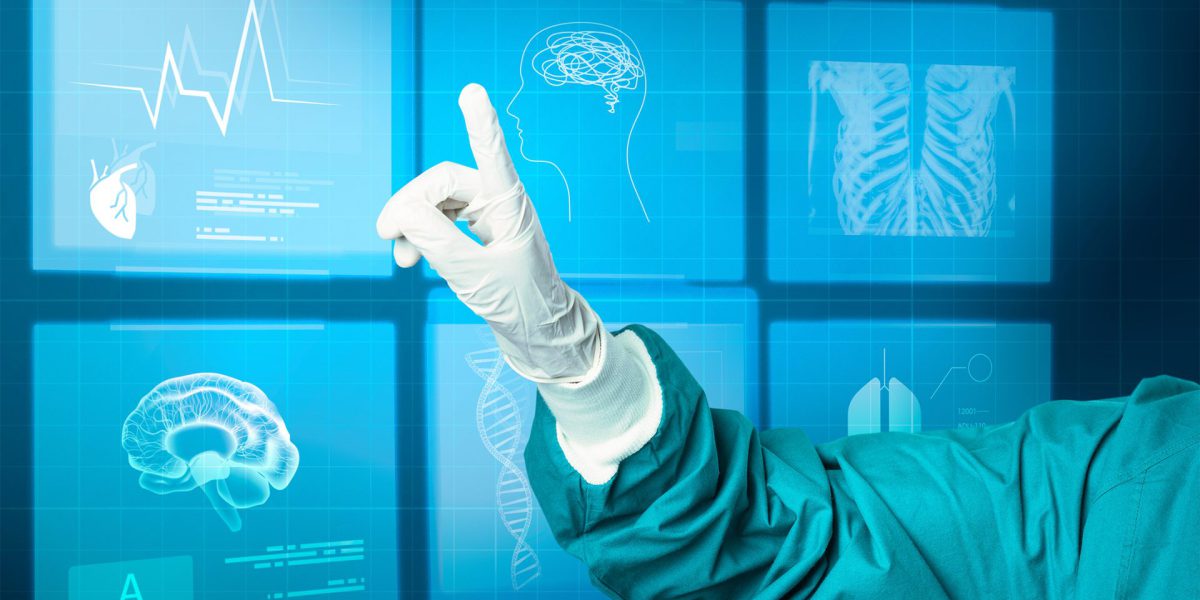Introduction to Radiology
Radiology, derived from the Latin word “radius” meaning ray, is a medical specialty that employs imaging techniques to visualize the internal structures of the body. It encompasses various modalities, including X-ray radiography, computed tomography (CT), magnetic resonance imaging (MRI), ultrasound, and nuclear medicine. These advanced imaging technologies allow medical professionals to peer inside the human body without invasive procedures, providing valuable information for diagnosis, treatment planning, and monitoring of diseases.
The Significance of Radiology in Healthcare
Radiology serves as a cornerstone in modern healthcare, revolutionizing the way medical professionals diagnose and treat patients. Through the use of non-invasive imaging techniques, radiologists can uncover hidden abnormalities, monitor the progression of diseases, guide interventional procedures, and evaluate treatment outcomes. The insights obtained from radiological imaging enable physicians to make informed decisions, leading to improved patient outcomes and enhanced overall healthcare quality.
Radiology Techniques and Modalities
Radiology encompasses a wide array of imaging techniques and modalities, each with its unique strengths and applications. Let’s delve into some of the most commonly employed radiological methods:
X-ray Radiography: Capturing the Essence
X-ray radiography is one of the oldest and most widely used imaging techniques in radiology. It involves the emission of X-rays through the body, which are absorbed at different rates by different tissues, producing an image. This technique is particularly useful for detecting fractures, assessing lung conditions, and identifying abnormalities in the gastrointestinal tract.
Computed Tomography (CT): Unveiling Detailed Anatomy
Computed tomography, commonly known as CT or CAT scan, utilizes X-rays to generate detailed cross-sectional images of the body. By combining multiple X-ray images taken from different angles, CT scans provide three-dimensional representations of internal structures. CT scans are instrumental in diagnosing conditions such as tumors, blood clots, and organ abnormalities.
Magnetic Resonance Imaging (MRI): Harnessing Magnetic Fields
Magnetic resonance imaging employs powerful magnets and radio waves to create highly detailed images of the body’s internal structures. Unlike X-rays and CT scans, MRI does not utilize ionizing radiation, making it a safer option for patients. MRI is particularly valuable for evaluating soft tissues, such as the brain, spinal cord, and joints, enabling accurate diagnosis of conditions like tumors, neurological disorders, and musculoskeletal injuries.
Ultrasound: Visualizing with Sound Waves
Ultrasound imaging, also known as sonography, utilizes high-frequency sound waves to produce real-time images of organs, blood vessels, and tissues. It is commonly used to monitor fetal development during pregnancy, assess abdominal and pelvic organs, and guide needle placement during minimally invasive procedures. Ultrasound is safe, non-invasive, and does not involve exposure to ionizing radiation.
Nuclear Medicine: Exploring Functional Insights
Nuclear medicine involves the use of radioactive materials, known as radiopharmaceuticals, to diagnose and treat diseases. These substances are introduced into the body, and their distribution is tracked using special cameras or scanners. Nuclear medicine techniques, such as positron emission tomography (PET) and single-photon emission computed tomography (SPECT), provide functional information about organ systems, helping detect cancer, evaluate heart function, and assess bone
Radiology: Illuminating Medical Insights for Better Care
Radiology, with its diverse range of techniques and modalities, plays a pivotal role in illuminating medical insights and improving patient care. By providing detailed visualizations of the internal structures and functions of the body, radiology empowers healthcare professionals to make accurate diagnoses, plan effective treatments, and monitor the progress of diseases. Let’s explore how radiology contributes to better care in various medical specialties.
Radiology in Oncology: Detecting and Staging Cancer
Cancer diagnosis and staging are essential for determining the appropriate treatment strategies. Radiology plays a crucial role in this process. Through techniques like CT scans, MRI, and PET scans, radiologists can identify tumors, assess their size and location, and determine the extent of metastasis. This information guides oncologists in developing personalized treatment plans, such as surgery, radiation therapy, or chemotherapy.
Radiology in Cardiology: Visualizing the Heart
Cardiovascular diseases are a leading cause of morbidity and mortality worldwide. Radiology aids cardiologists in diagnosing and managing these conditions. CT angiography allows for the visualization of coronary arteries, helping detect blockages or narrowing that may lead to heart attacks. Cardiac MRI provides detailed images of the heart’s structure and function, aiding in the evaluation of conditions like cardiomyopathy and heart valve abnormalities.
Radiology in Neurology: Understanding Brain Disorders
The brain is a complex organ, and disorders affecting it require precise diagnosis and monitoring. Radiology techniques such as MRI and CT scans provide detailed images of the brain, enabling neurologists to identify abnormalities, such as tumors, strokes, or degenerative diseases like Alzheimer’s. These insights assist in designing appropriate treatment plans and monitoring the progression of neurological disorders.
Radiology in Orthopedics: Assessing Musculoskeletal Conditions
Orthopedic specialists rely heavily on radiology to assess and manage musculoskeletal conditions. X-rays are commonly used to diagnose fractures, joint dislocations, and degenerative diseases like osteoarthritis. CT scans and MRI provide detailed images of bones, joints, and soft tissues, aiding in the evaluation of complex fractures, ligament tears, and spinal conditions. This information guides orthopedic surgeons in planning surgical interventions or recommending non-surgical treatment options.

Radiology in Pediatrics: Safeguarding Children’s Health
Radiology plays a vital role in pediatric medicine, where the focus is on the unique healthcare needs of children. Imaging techniques like ultrasound and X-ray radiography are widely used in pediatric settings due to their non-invasive nature. Ultrasound helps in diagnosing conditions such as congenital anomalies, abdominal masses, and hip dysplasia. X-rays are useful in assessing bone fractures, respiratory conditions, and gastrointestinal issues in children.
Radiology in Emergency Medicine: Rapid Diagnostics and Decision-making
In emergency medicine, time is of the essence, and rapid and accurate diagnosis is crucial. Radiology plays a pivotal role in emergency departments by providing timely insights. CT scans are commonly used to evaluate traumatic injuries, such as head trauma or internal bleeding. X-rays help identify fractures and dislocations, while ultrasound assists in diagnosing conditions like appendicitis or deep vein thrombosis. Radiology aids emergency physicians in making informed decisions about patient management and treatment options.
Radiology in Interventional Procedures: Guiding Precision
Radiologists often perform minimally invasive procedures with the guidance of imaging techniques. Interventional radiology procedures, such as angioplasty, embolization, and biopsies, rely on real-time imaging to guide the placement of catheters, needles, or stents. This approach minimizes the need for open surgeries, reduces patient discomfort, and accelerates recovery
Common FAQs
What is the role of a radiologist?
Answer: A radiologist is a medical doctor who specializes in interpreting and analyzing medical images obtained through various imaging techniques. They play a crucial role in diagnosing diseases, monitoring treatment progress, and guiding other healthcare professionals in making informed decisions regarding patient care.
Are radiology procedures safe?
Answer: Radiology procedures, when performed by trained professionals, are generally safe. However, it’s essential to minimize radiation exposure, especially in procedures involving ionizing radiation such as X-rays and CT scans. Radiology departments follow strict protocols to ensure patient safety and minimize radiation risks. Additionally, non-ionizing techniques like ultrasound and MRI are safe alternatives, as they do not use radiation.
Is radiology only used for diagnosing diseases?
Answer: While radiology is primarily used for diagnosing diseases, it also plays a crucial role in treatment planning and monitoring. Radiologists assist other specialists in guiding minimally invasive procedures, such as biopsies or catheter placements, using imaging guidance. Additionally, interventional radiologists perform specialized procedures to treat conditions like tumors or blockages in blood vessels.
How long does it take to get radiology results?
Answer: The time it takes to receive radiology results varies depending on the complexity of the procedure and the urgency of the situation. In some cases, such as emergency situations, results may be available within minutes. For routine diagnostic imaging, results are typically available within a few days. It’s best to consult with your healthcare provider to get a specific timeframe for your situation.
Can pregnant women undergo radiology procedures?
Answer: Radiology procedures involving ionizing radiation, such as X-rays or CT scans, should be avoided during pregnancy unless absolutely necessary. However, non-ionizing techniques like ultrasound or MRI are considered safe for pregnant women and are often used for diagnostic purposes.
How can I prepare for a radiology procedure?
Answer: The preparation for a radiology procedure depends on the specific type of imaging being performed. Your healthcare provider or the radiology department will provide you with detailed instructions. In some cases, you may be required to fast for a certain period, avoid specific medications, or remove jewelry or metal objects. It’s important to follow the instructions given to ensure the procedure goes smoothly.
These FAQs provide a basic understanding of radiology and address some common concerns. If you have further questions or specific inquiries about your situation, it’s best to consult with your healthcare provider or a radiologist for personalized information and guidance.
Conclusion
Radiology plays a vital role in modern healthcare, illuminating medical insights for better patient care. Through various imaging techniques, radiologists provide valuable diagnostic information, guide interventions, and contribute to treatment planning and monitoring. With continuous advancements in technology, radiology continues to evolve, enabling more accurate diagnoses and improved healthcare outcomes.
Remember, if you have any specific concerns or questions about radiology, always consult with a healthcare professional for personalized advice.

